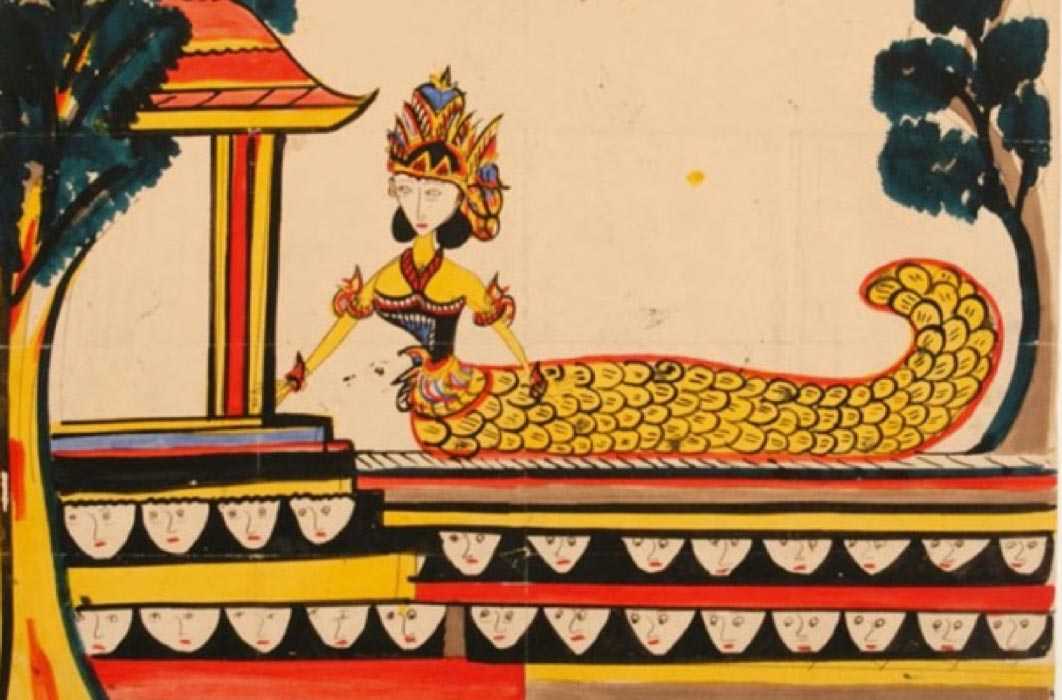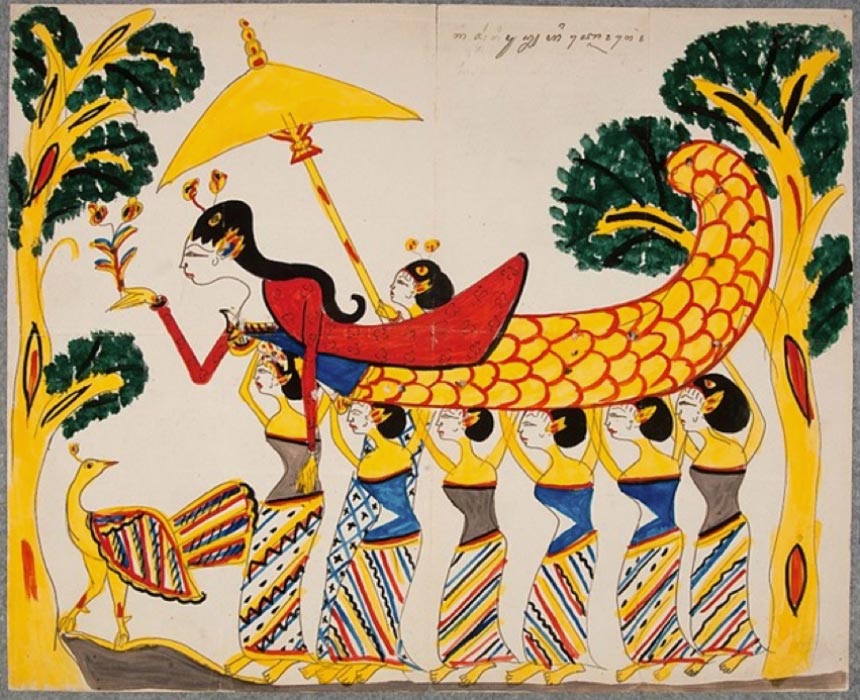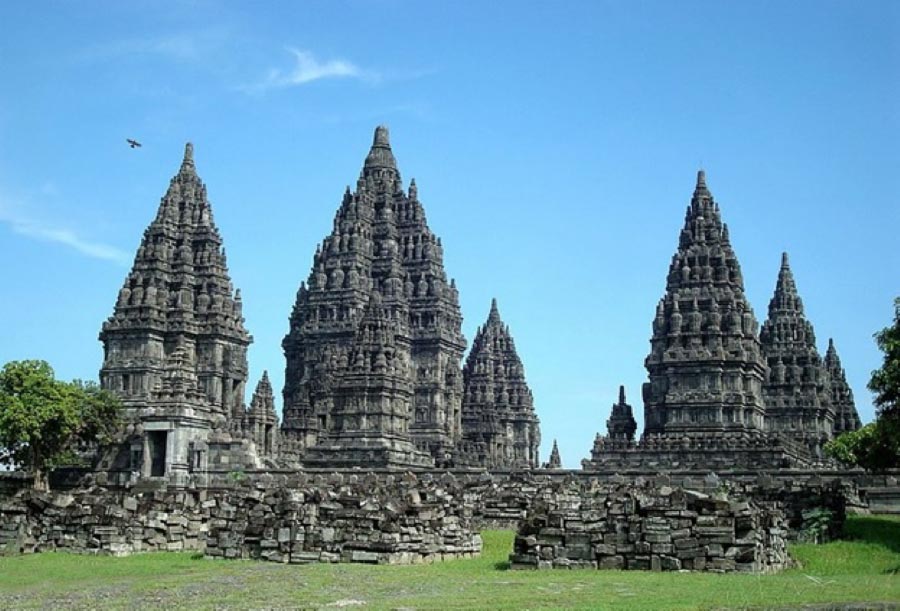
Nyi Blorong Commander of the Southern Seas and Bringer of Wealth
One afternoon in the 1960s, the people of Magelang in Java, Indonesia, gathered on the edge of the main road which connects Magelang and Yogyakarta and sounded anything they could find which could make a loud noise. After some time, the wind blew from the south. This southern wind, according to the local legend, was a Lampor. A Lampor refers to trips to several regions in Java which are carried out by the soldiers of Nyi Roro Kidul, the mythical Queen of the Southern Seas, led by her commander Nyi Blorong. The reason people needed to make such a din was so that Nyi Blorong's supernatural troops would not stop by the residents' houses, thus bringing an outbreak of disease to the area.

An artwork depicting Kanjeng Ratu Kidul by Gunawan Kartapranata (Gunawan Kartapranata/ CC BY-SA 3.0)
Around the time of the Indonesian Independence Day in August 2001, a rumor spreading throughout East Java and at least as far west as Semarang, had it that Nyi Blorong had lost her selendang (scarf) and was angrily looking for it. Therefore, little plastic bags filled with variously colored liquids were strung up in front of houses and shops in Jember. These penangkal (charms) were hung to ward off the fury of Nyi Blorong and prevent her from entering and bringing misfortune into people’s houses.

Depiction of Nyi Blorong (circa 1928) National Museum of World Cultures (Public Domain)
These are examples that the myth of Nyi Blorong still exists in the oral tradition in Indonesia. She is described as being able to change her appearance from a golden scaly snake into a beautiful woman wearing a green kebaya (a light tunic worn by women in Indonesia, Malaysia and other Southeast Asian countries) with a long golden cloth - the long golden cloth being the embodiment of her original figure which is the giant golden snake. Aside from being the commander of the supernatural world ruled by Nyi Roro Kidul, the Queen of the Southern Seas, she is also able to provide pesugihan (instant wealth) to those who call upon her.
Stories of instant wealth provided by Nyi Blorong to certain believers indicate that the belief in Nyi Blorong's luck has existed for a long time. However, the Javanese people generally regard rich people who allied themselves with Nyi Blorong negatively. Javanese poet Raden Ngabehi Ranggawarsito also criticized the practice. In his Serat Jayengbaya (Book of Jayengbaya), which he wrote around 1822-1830, Ranggawarsito referred to ‘Nyi Blorong’ to mock the Javanese people of that time when he wrote: “Yang sudah-sudah cepat kaya, sehingga seperti Nyi Blorong belaka. (“The people of the past got rich quickly like Nyi Blorong.”)
The Creation Myth of Nyi Blorong
Until movies were made about her in Indonesia, Nyi Blorong was a much less well-known figure than Nyai Roro Kidul. Some say she is a minor goddess of fortune who lives in a swamp, while others say she lives in a palace in the Indian Ocean. She has also been said to be a jinn (genie) in the form of a beautiful woman who can change into a snake or has the tail of a snake with jewels as scales. There is also a link between Nyi Blorong and Nyi Tawun, the Javanese dhanyang desa (a village’s tutelary spirit) who also appears in the form of a snake. Nyi Tawun could also shapeshift from being a beautiful woman to a snake. She is said to have brought people wealth, after which they started calling her Nyi Blorong. This is a rather an exceptional link as the dhanyang usually acts as the moral guardian of the community, while obtaining wealth from Nyi Blorong is traditionally considered immoral and those who pursue this way of gaining wealth are said to lust after wealth.





